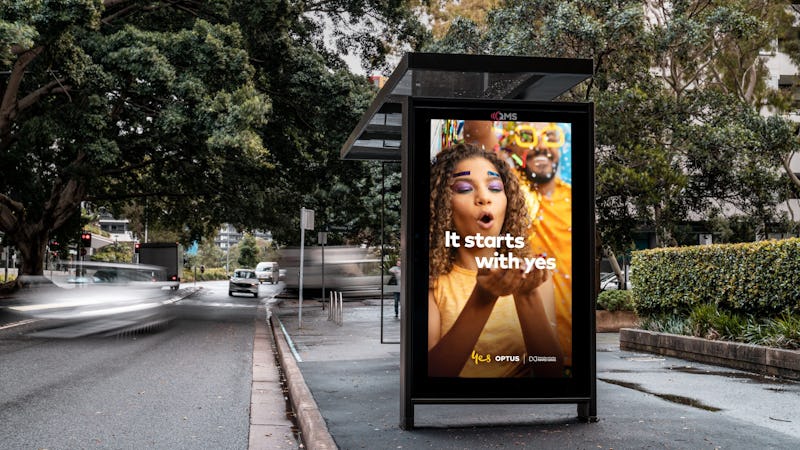What does OTT Advertising Mean?

Streaming services are becoming increasingly important as more and more Americans are accessing content via OTT advertising platforms like Netflix, Hulu, Amazon Prime Video, and others. OTT advertising is an effective way to reach target audiences in a tuned-in environment. Unlike broadcast ads which can be costly and hard to measure, OTT ads offer the ability to deliver targeted messages tailored for specific audiences with more accurate results.

OTT advertising can also be cost-effective, as it typically involves buying media at a fixed rate instead of using the traditional CPM (cost per thousand impressions) model. This means that advertisers pay a flat fee for each spot regardless of viewership or impressions, which can save money in the long run. Additionally, OTT advertising offers detailed analytics and tracking capabilities to help further refine campaigns. If you're looking to launch a new OTT advertising campaign, there are plenty of options available.

Many services offer ad packages tailored specifically for streaming tv platforms, with features ranging from sophisticated targeting and optimization algorithms to customizable creative templates. With the right OTT Advertising strategy, you can make sure your message is heard by the right audience at the right time.
Over 97 million households in the United States have a CTV, and it's estimated that 85% of them use their CTV for OTT viewing. Of the OTT viewing options, you have a mix of VOD, AVOD, SVOD, TVOD, and vMVPD services. Oh, and each service has its own rules and processes when it comes to advertising. Got it?
If you're feeling confused, you're not alone. It's easy to get lost in the sea of advertising acronyms and terms – there are many! – but it gets especially challenging in the world of OTT advertising.
Advertising on Streaming Services

OTT stands for "Over-The-Top," which is a category in entertainment viewing that encompasses online streaming services and platforms. Essentially, you're viewing movies, shows, and other programs "over the top" and outside of traditional cable subscriptions. As of 2019, Netflix, Hulu, and Amazon Prime are the most recognizable and most widely used OTT advertising services in the United States.
As more OTT advertising services become available and as more consumers continue to spend their time streaming platforms for their entertainment, OTT advertising has become an essential part of any brand's media mix. While the power and mass reach of traditional television advertising isn't going away, it's good to be where the people are – especially since research shows that OTT marketing, when combined with traditional television advertising, increases ad recall by 34%.
The Streaming Video Service Marketplace

In addition to streaming services themselves, there are a variety of online marketplaces available for advertisers looking to target the OTT advertising space. These marketplaces provide access to inventory from a wide array of streaming video services and allow brands to launch campaigns quickly and efficiently. Some examples are Peacock, Roku, NBC Universal, Paramount+, Sling TV, Amazon Prime, Hulu, Disney+, and Netflix.
Reaching Cord Cutters With Streaming TV

Cord-cutters are those who have ditched their cable subscriptions in favor of using streaming services like Netflix, Hulu, and Amazon Prime Video. This changing landscape has created a whole new audience for advertisers to target, with OTT ads being the ideal solution. With OTT advertising, you can reach audiences watching streaming content on any device, anytime and anywhere.
Additionally, you can use demographic data to target cord-cutters by age, gender, interests, location, and more. Plus, with access to real-time analytics, you are able to measure the success of your campaigns on an ongoing basis.
The Advantages for Marketers
The advantages of OTT (Over-The-Top) media services have revolutionized the marketing landscape, providing businesses with new and innovative ways to reach their target audience. One such method is the customer engagement platform for OTT, which enables marketers to interact with their audience more intimately, thereby creating a personalized experience. Amazon Livestream advertising has emerged as a leading player in this space, allowing businesses to capitalize on live events and real-time content to enhance their reach. In essence, OTT meaning marketing signifies the shift from traditional media platforms to digital channels, where brands can build stronger connections with consumers and leverage the power of data-driven insights for better targeting and performance.
Learn more about Short Form Video Statistics and Marketing Trends
OTT vs. Connected TV (CTV) vs. Linear TV

It's important to understand the differences between these types of media as you develop your advertising strategy.
OTT
OTT is a way to access TV/video content online, usually through streaming or video-on-demand (VOD) services. It delivers content outside of traditional broadcast infrastructure and gives users the ability to watch what they want when they want it. Advertisers can also take advantage of OTT's addressability, pre-rolls, mid-rolls, and interactive ads to reach targeted audiences with the right message at the right time.
CTV
Unlike OTT advertising, CTV is an internet-connected device that provides access to streaming content. It could be a smart TV, Roku, Chromecast, gaming console, or other device equipped with the necessary hardware and software to access online streaming services. While these devices can be used to watch OTT ads, they are not interchangeable terms. CTV offers advertisers more targeted options, while OTT advertising gives a broader reach.
Linear TV
Linear TV is traditional broadcast television content delivered via cable or satellite.
OTT advertising and CTV offer more targeted options, while Linear TV has a broader reach. With this knowledge under your belt, you can create an effective campaign that meets your goals.
Performance TV Is Your Best Bet for Streaming TV Advertising

Performance TV is a leading OTT advertising and CTV advertising platform that allows brands to reach their target audiences through streaming services like Netflix, Hulu, Sling TV, YouTube, and more. Performance TV offers an easy-to-use dashboard with detailed analytics on campaign performance, as well as advanced targeting capabilities which allow advertisers to reach the right people with the right message.
This can be done through demographic data, device targeting, and more. Additionally, Performance TV offers a variety of cost-effective packages to accommodate any budget or objective.
OTT Viewership Statistics
OTT media services have experienced a massive surge in popularity over recent years, fundamentally transforming the landscape of media consumption. Here is a report on the OTT viewership statistics as of 2023:
- Total Viewership: Globally, OTT viewership reached an estimated 2.5 billion people in 2023, a significant increase from 2.1 billion in 2022. This dramatic increase shows the shifting trend from traditional television and cable subscriptions towards digital streaming platforms.
- Top Countries: The U.S. continues to lead in terms of OTT viewership, with approximately 330 million users as of 2023. India follows with an estimated 300 million users, primarily driven by the widespread adoption of mobile devices for media consumption. China, the UK, and Germany round out the top five countries for OTT viewership.
- Service Providers: Netflix remains the dominant OTT platform worldwide, boasting about 300 million subscribers. Amazon Prime Video comes in second with around 200 million, while Disney+ has continued its rapid growth to reach 150 million subscribers. Newer platforms such as HBO Max and Peacock have also seen significant growth, contributing to the increasingly competitive landscape.
- Viewing Hours: The average viewing hours for OTT platforms are around 2.2 hours per day in 2023. The lockdown measures during the Covid-19 pandemic led to an increase in screen time, and these habits have remained even as countries have started to open back up.
- Demographics: OTT viewership spans across all age groups, but millennials and gen Z are the most engaged, with over 60% of these age groups using OTT services daily. The 18-34 age group remains the highest demographic in OTT usage.
- Device Usage: Mobile devices have the largest share in OTT viewership, with 52% of users accessing OTT services through smartphones, followed by Smart TVs at 26%, and desktop computers and tablets both at 11%.
- Content Type: Movies and serialized shows continue to be the most popular content types on OTT platforms. However, sports and live events broadcasting on OTT platforms are gaining momentum.
- Ad-Supported Viewership: Ad-supported viewership is growing faster than subscription viewership. Services like Peacock and Hulu that offer ad-supported tiers are experiencing significant growth.
These figures underscore the increasingly vital role of OTT platforms in the media consumption landscape. As technology and internet connectivity continue to improve, the number of OTT viewers is expected to rise even further in the coming years.
How Much Does Streaming TV Advertising Cost?

Streaming platforms TV ads provide a huge opportunity for businesses, giving them access to an expansive roster of viewers at more reasonable costs than linear. Plus, the flexibility in how you buy online streaming ad space allows marketers to get specific with their target audience and GRP (Gross Rating Point) percentages - providing greater reach without committing larger budgets upfront.
Accessibility for Small Businesses
With the need to target specific audiences without breaking the bank, OTT platforms may not always be a cost-effective solution for small regional enterprises. While media organizations can invest up to $50K in streaming platforms, CPMs still boast prices ranging from $50 - $75 and often don't offer sufficient ROI on smaller budgets -- leaving local businesses unable to maximize their advertising reach.
Tailored Advertising for Streaming Services
As the popularity of Over-The-Top (OTT) platforms in the USA continues to soar, the demand for specialized advertising companies that cater to streaming services has also significantly risen. These companies expertly navigate the intricacies of digital advertising, using data-driven strategies to reach diverse and dispersed audiences across various streaming platforms. They provide unique solutions, from crafting compelling ad creatives to targeting and retargeting viewers based on their watching habits and preferences. Their role has become instrumental in a world where streaming services dominate, enabling businesses to make the most of the burgeoning OTT landscape and its ever-evolving opportunities.

Buying ads on YouTube TV
Looking to get your message in front of a YouTubeTV audience? Thanks to the relationship between Google and YouTube, you can purchase targeted ads through familiar ad auctions – but only if they're visible on Youtube TV. To ensure visibility, be sure to enlist the help of one of Google's knowledgeable sales reps for exclusive media placement.
Buying advertising on Hulu
Buying advertising on Hulu is a great way to reach viewers who are streaming content online. With both OTT ads and CTV options, advertisers can target specific audiences with the right message at the right time. For example, marketers can create pre-rolls, mid-rolls and interactive ads that will capture their customer's attention. In addition, with Hulu's proprietary target audience and platform capabilities, marketers can also reach their desired demographics more effectively. This way, advertisers are able to maximize their ad spend and get the most out of their campaigns. And with Hulu's advanced analytics tools, they can track their campaign's performance in real-time. In short, buying advertising on Hulu is an effective and cost-efficient way to reach consumers on streaming platforms.
Hulu Ad Manager is a self-service platform designed for businesses to create, manage, and optimize their advertising campaigns on Hulu. It provides tools for targeting specific audiences, measuring the effectiveness of ads, and controlling ad spend. Using Hulu Ad Manager can help businesses reach a highly engaged audience on Hulu and effectively advertise their products or services to a relevant audience.

Advertising on Disney+
Advertising on Disney+ can be an effective way to reach a wide range of consumers. Through both OTT ads and CTV, marketers have access to the powerful platform capabilities and targeting options that this streaming service provides. For example, with pre-rolls, mid-rolls, interactive ads, and other formats, advertisers are able to capture the attention of their desired audiences. Additionally, Disney+ offers advanced analytics tools and reporting features to track the performance of campaigns in real time. With this information, marketers can make data-driven decisions on how best to optimize their ad spend and get the most out of their investment. By taking advantage of all Disney+ has to offer, advertisers are sure to reach their desired consumers in an effective and cost-efficient way.
3 Best Practices for Advertising on Streaming Services

1. Personalization and Relevance: Advertising on streaming services should be tailored to the interests of the target audience. It is important for advertisers to tailor their messaging, visuals, and even the timing of ad placements so that they are more relevant to viewers watching content. Ads should also be timely in order to capture a user's attention - such as running ads when a viewer is watching a related show or movie.
2. Use of Platform-Specific Ad Formats: Different streaming services support different ad formats, so it is important to research the best ones for each platform in order to ensure maximum ROI. For example, Netflix and Hulu both offer full-screen ads, which are effective, while Amazon Fire TV takes advantage of interactive ads to keep viewers engaged.

3. Leverage Data & Targeting Strategies: Advertisers should make use of advanced targeting strategies such as segmentation and look-alike audience modeling in order to ensure the right people are seeing the right ads at the right time. It is also important to track and measure the performance of ad campaigns in order to make sure they are achieving their desired results. This can be done through metrics such as view-through rate (VTR), click-through rate (CTR), and cost per acquisition (CPA). By combining data with appropriate targeting strategies, advertisers will be able to maximize their ROI from streaming tv campaigns.
Can you advertise WEB3 or Crypto Products on OTT?
- Review platform policies: Before advertising any product, it's essential to thoroughly review the advertising policies of the OTT platform you plan to use. Different platforms may have varying rules, restrictions, and guidelines regarding crypto-related or WEB3 advertising. Make sure your advertisement complies with those policies.
- Educate and inform: Given the potential complexity of WEB3 and crypto products, consider focusing your advertisement on educating and informing the viewers. Highlight the benefits, use cases, and how the product can improve their lives or solve a particular problem. Providing clear and concise information can help build trust and interest among the audience.
- Highlight security measures: One common concern in the crypto space is security. Assure viewers that your product prioritizes security measures such as encryption, multi-factor authentication, and secure storage solutions. Emphasize any partnerships or audits that validate the security practices of your product.
- Use storytelling and visuals: Utilize compelling storytelling techniques and visually appealing content to capture viewers' attention and convey your message effectively. Showcase real-world scenarios, testimonials, or case studies to demonstrate the practical applications and benefits of your WEB3 or crypto product.
- Target the right audience: OTT platforms typically offer targeting options, allowing you to reach specific demographics or interest groups. Take advantage of these targeting features to focus your advertisement on individuals who are more likely to be interested in crypto or WEB3-related topics.
- Compliance with regulations: Adhere to relevant advertising regulations, including those related to finance, investments, and cryptocurrency. Ensure that your ad does not make false claims or mislead viewers. Include necessary disclaimers and disclosures as required by local regulations.
- Consider partnerships: Collaborating with influencers, content creators, or established brands within the crypto or tech space can help amplify your message and reach a wider audience. Engage in strategic partnerships to leverage their existing audience and credibility.
Learn more about Crypto Advertising: How to Target Cryptocurrency Users
Types of Streaming Tv Advertising
AVOD (Ad-based Video OnDemand): AVOD is a streaming service that provides consumers with access to free content that contains advertisements. Good examples of AVOD services are YouTube, Tubi, and Crackle.
SVOD (Subscription-based Video OnDemand): This is a streaming service that consumers subscribe to and pay a fee in order to access ad-free content. Netflix, Amazon Prime, Disney+, HBO Max, and AppleTV+ are all examples of traditional SVOD services. Hulu, Peacock, ESPN+, and Quibi are examples of modified SVOD services because, in addition to selling ad-free subscriptions, they also provide consumers the opportunity to pay a smaller monthly fee to view ad-supported content.
TVOD (Transaction-Based Video OnDemand): iTunes and Vudu are good examples of TVOD services, whereby consumers pay for each piece of video-on-demand content.
MVPD (Multichannel Video Programming Distributor): MVPD is just a fancy way to describe a traditional cable provider such as Comcast or DISH. Use it at dinner parties – you'll dazzle!
vMVPD (Virtual Multichannel Video Programming Distributor): Think traditional cable, BUT instead of the content being fed to your Television through cable boxes, fiber, and coaxial cables, it's streamed through the internet. AT&T TV Now, Sling TV, PlayStation Vue, Fubo, Philo, YouTubeTV, and Hulu Live are all examples of vMVPD.
VOD (Video OnDemand): Some OTT ads streaming services provide live streaming, but most offer a catalog of video-on-demand content that can be selected and viewed at any time. Traditional cable providers also feature on-demand content.
OTT Advertising Terms
Ad Pod: An ad pod is basically a regular commercial break where a group of ads plays back-to-back. Ad pods vary in length and take place at various times during the streaming content.
Autoplay Video Ad: This is an ad that will play automatically before the beginning of the streaming content.
FEP (Full-Episode Player): Long-form, episodic programming (30-60 minutes), available online or through an app. It's a great way for viewers to catch up on their favorite TV shows outside of traditional cable AND enables advertisers an opportunity to place commercials in this premium inventory.
In-Stream Video Ad: This is an advertisement that plays before, during, or after the video. Typically, these ads cannot be stopped from being played but can sometimes be skipped.
Interactive Video: A type of advertisement that is meant to be interactive with the consumer, featuring various calls-to-action, forms, polls/surveys, links, etc. The goal is to give the user various options to engage with the message beyond viewing the ad.
Mid-roll: Advertising that runs in the middle of a movie or tv show.
Pre-Roll: These are advertisements that run at the beginning of a movie or tv show.
Other Terms
Addressability: Addressability is the ability to target your message to specific devices, browsers, consumer segments, and individuals. Consumer segments include behavioral information, demographics, and geographic information.
Addressable Television: Technology that gives advertisers the flexibility to show different ads to different audiences even if they are watching the same TV program. Most cable television services offer addressable solutions, but this is primarily an OTT attribute.
CTV (Connected Television): A television that is connected to the internet via an OTT ads device such as Roku, AppleTV, or Chromecast.
Smart TV: A television with streaming hardware and software built into the TV, versus through an external device such as a Roku or AppleTV.
OTT platform professional services have become increasingly important for OTT streaming companies in the highly competitive world of streaming. With so many streaming options available to consumers, it can be difficult for OTT companies to stand out and attract viewers. That's why many of them are turning to professional services to help them create high-quality content and improve the user experience. Additionally, OTT television ratings are crucial in determining the success of a streaming service. By monitoring viewer engagement and feedback, OTT companies can make strategic decisions about what content to produce and how to improve their platform. With the help of professional services and accurate ratings, OTT streaming companies can continue to thrive in the ever-changing world of streaming.

Measurement Systems for Amazon and Hulu
Amazon and Hulu have both developed their own measurement systems to track and analyze user engagement with their respective platforms. Amazon's OTT measurement system is known as Amazon Fire TV, while Hulu uses its own proprietary measurement system.
Amazon Fire TV provides detailed analytics on user engagement, including information on the number of views, unique viewers, and time spent watching content. It also offers data on the types of devices used to access content, as well as information on popular content genres.
Similarly, Hulu's measurement system tracks metrics such as the number of views, watch time, and engagement rates. It also provides insights into user demographics and the devices used to access the platform.
These measurement systems provide valuable insights for advertisers and content creators, helping them to better understand their audience and improve the relevance of their offerings. By tracking user behavior, Amazon and Hulu can identify trends and preferences, allowing them to make informed decisions on content acquisition and development.
What is OTT Channel Ad Service?
OTT channel ad service allows advertisers to reach their target audience through internet-based television platforms, bypassing traditional cable or satellite providers. OTT channel ads are essential for businesses looking to target younger, tech-savvy audiences who prefer streaming services over traditional TV. OTT marketing term has been gaining momentum in recent years due to the increasing popularity of streaming services like Netflix, Hulu, and Amazon Prime Video. With the rise of OTT, businesses need to keep up with the latest advertising trends to stay relevant in the industry.
Pricing
When it comes to over-the-top (OTT) advertising, understanding the importance of ott ad price and ott CPM is crucial. The OTT ad price refers to the cost of placing an ad on an OTT platform, while the OTT CPM refers to the cost per thousand impressions. Both factors play a significant role in determining the success of an OTT advertising campaign. For businesses looking to sell OTT ad space, it's essential to price it competitively while considering the CPM. By doing so, advertisers are more likely to invest in their ad space, which can increase revenue for the platform. Overall, it's important to strike a balance between pricing and quality to ensure a profitable and effective OTT advertising campaign.
Live Streaming vs OTT
Live streaming and OTT streaming are two distinct methods of delivering video content to audiences. Live streaming is a real-time broadcast of video content where the viewer watches the event as it is happening. This is typically used for events such as concerts, sports events, or news broadcasts. On the other hand, OTT streaming is a method of delivering pre-recorded video content to audiences through an internet connection without the need for a cable or satellite TV subscription. While live streaming offers the excitement of watching events as they happen, OTT streaming provides the convenience of being able to watch pre-recorded content at any time. Additionally, live streaming is more prone to technical issues and buffering due to the real-time nature of the broadcast, while OTT streaming is generally smoother and more reliable due to the pre-recorded content being delivered. Learn more about Live-Streaming.
OTT Advertising Management
The process of planning, executing, and monitoring advertising strategies across OTT platforms. These platforms deliver video content directly to consumers over the internet, bypassing traditional broadcast or cable TV platforms. They include services such as Netflix, Hulu, Amazon Prime, Disney+, and many others.
With the surge in viewership on these platforms, OTT advertising has become a critical aspect of digital marketing. It offers advertisers an opportunity to reach a vast and engaged audience, often with more precision and personalization than traditional TV advertising.
OTT advertising management encompasses a range of activities, including:
- Ad Planning: This involves identifying the target audience, setting advertising objectives, and deciding on the most appropriate OTT platforms and ad formats (like pre-roll, mid-roll, or post-roll) to achieve those objectives.
- Campaign Execution: This is the process of creating engaging ad content and launching it on selected OTT platforms. With the ability to segment and target users based on various demographic and psychographic factors, this process requires data-driven decision-making to maximize reach and engagement.
- Performance Tracking: Just like other digital advertising methods, OTT advertising provides real-time metrics that allow advertisers to track the performance of their campaigns. These metrics may include impressions, clicks, conversions, video completion rates, and more.
- Optimization: Based on performance data, campaigns may need to be adjusted or optimized over time. This could mean altering the ad content, changing the targeting criteria, or modifying the chosen OTT platforms.
- Reporting: Comprehensive reports detailing the performance of the OTT advertising campaign are typically compiled and analyzed. These insights are used to improve future campaigns and inform overall marketing strategy.
Ready to Start Advertising on a Streaming Services?
OTT advertising is a great way to reach targeted customers in the streaming media space. OTT ads provide advertisers with access to premium content and offers a variety of options to engage with consumers, such as addressability, pre-rolls, mid-rolls, and interactive ads. Advertisers can also take advantage of CTV or Smart TV solutions to reach audiences on the biggest screen in the house. With OTT ads, there are plenty of opportunities for advertisers to create effective and engaging campaigns that will reach the right people at the right time.


